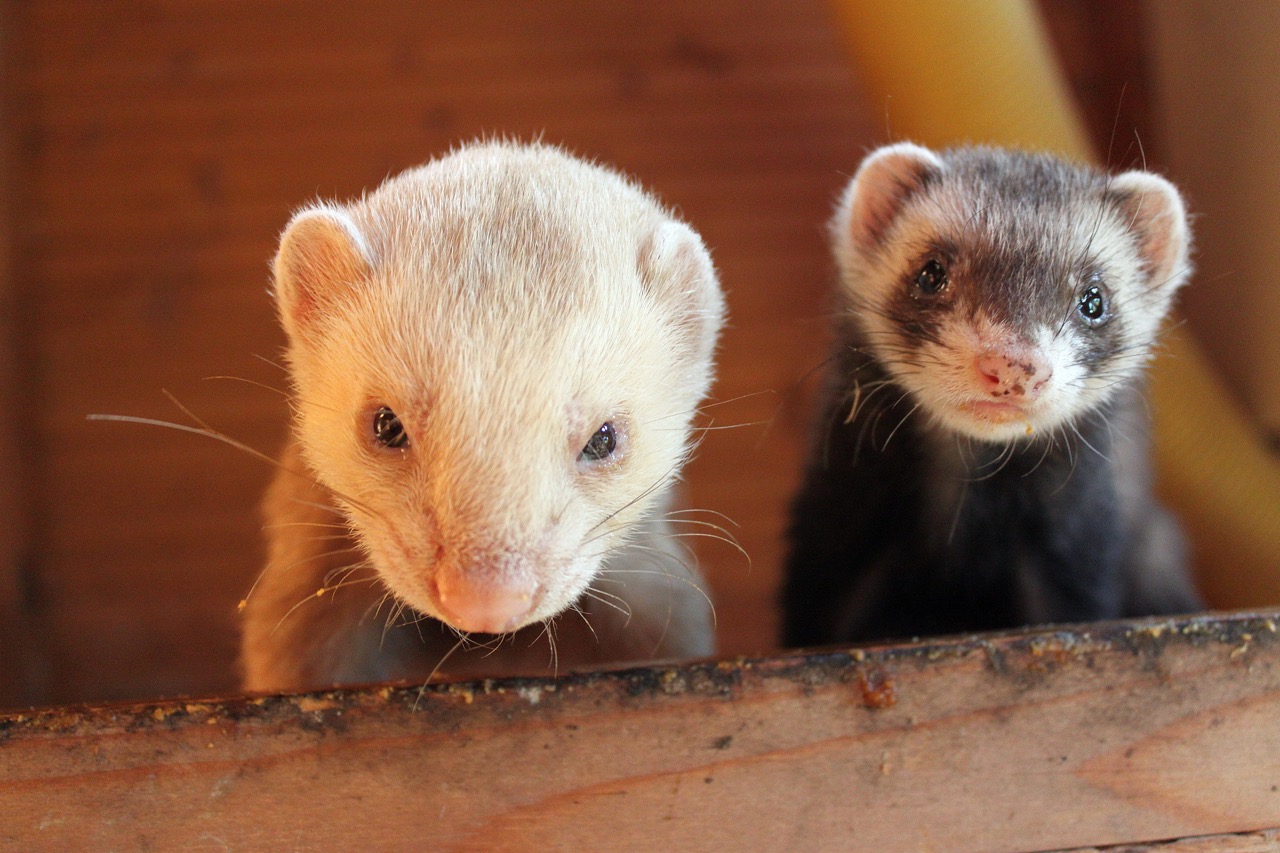Choosing the right cage for a hyperactive ferret can be a daunting task, especially for new ferret owners. Ferrets are known for their playful and energetic personalities, requiring ample space and stimulating environments to thrive. A well-chosen cage not only accommodates their activity levels but also ensures their safety and comfort. In this article, we will explore the unique needs of hyperactive ferrets, essential features to look for in their cages, recommended cage types, and tips for ensuring a safe and comfortable living environment.
Understanding the Unique Needs of Hyperactive Ferrets
Hyperactive ferrets are bundles of energy, often engaging in playful antics and explorative behaviors. They require a cage that allows them to move freely and interact with their surroundings. Unlike other small pets, ferrets are climbers and burrowers, so a simple, flat space will not suffice. Their natural curiosity means they need a multi-tiered environment that provides various levels for climbing and playing, as well as tunnels and hides for enrichment.
Social creatures by nature, ferrets thrive on interaction and stimulation. If left in a cage that restricts their movement or engagement, they may exhibit signs of boredom or stress, such as excessive digging or pacing. Therefore, the cage should also be designed to allow for enrichment activities, such as hanging toys, ramps, and areas that mimic their natural habitats. Understanding their unique needs will guide pet owners in selecting a cage that promotes physical activity and mental stimulation.
Lastly, it’s crucial to consider the ferret’s lifespan and growth. Ferrets typically live between 6 to 10 years, and their activity levels can change as they mature. A cage that can accommodate their needs from a young age into adulthood is essential. Think about how the cage can evolve with their changes in behavior and energy levels over time, ensuring a long-term solution for your furry friend.
Key Features to Look for in a Ferret Cage
When selecting a cage for a hyperactive ferret, consider the dimensions and layout. A spacious cage, ideally at least 3 feet high and 2 feet wide, allows for vertical movement and multiple levels. Look for cages with multiple platforms and ramps that encourage climbing and exploration. Adequate space not only accommodates their energetic lifestyle but also allows you to provide engaging toys and accessories.
Material and construction are also critical factors. Ferrets are known for their chewing tendencies, so choose a cage made from durable, non-toxic materials. Metal cages with a powder-coated finish are often more resistant to wear and tear than plastic options. Additionally, ensure that the bars are closely spaced (about 1 inch apart) to prevent any escapes or accidental entrapments, as ferrets are small enough to squeeze through larger gaps.
Ventilation and ease of cleaning should not be overlooked. A cage with removable trays or slide-out bases makes cleaning much easier, which is vital given a ferret’s propensity to be messy. Good airflow is essential to prevent odors and maintain a healthy environment. Ensure that the cage has multiple access points so you can interact with your ferret easily while making cleaning and maintenance a breeze.
Recommended Cage Types for Active Ferrets
Several cage types are suitable for hyperactive ferrets, with multi-level ferret condos being among the best options. These spacious structures feature multiple platforms, ramps, and tunnels designed specifically for ferret play. Brands such as Ferret Nation and Critter Nation offer models that provide generous living space and are constructed from durable materials, making them ideal for active ferrets.
Another great option is a custom-built ferret cage. This allows you to tailor the dimensions, layout, and materials to suit your ferret’s specific needs. Custom builds can include features like integrated tunnels, hiding spots, and climbing structures, ensuring a stimulating environment. They also provide the flexibility to modify the cage as your ferret grows or if their activity levels change.
Lastly, portable or travel cages can be beneficial for temporary use, such as during trips or outdoor playtime. However, they should not be used as a permanent living solution. Look for travel cages that are spacious enough to allow movement and play, with secure closures to prevent escapes. While these cages can be convenient for short-term situations, it’s essential to ensure that your ferret spends most of their time in a larger, more stimulating environment.
Ensuring Safety and Comfort in Your Ferret’s Environment
Creating a safe environment goes beyond just choosing the right cage. When setting up the cage, use bedding that is comfortable yet easy to clean, such as fleece liners or safe paper bedding. Avoid materials like cedar or pine shavings, which can cause respiratory issues. It’s important to provide plenty of hiding spots and bedding areas, as ferrets appreciate places to burrow and feel secure.
Regularly inspect the cage for any sharp edges or loose parts that could harm your ferret. Ensure that any toys or accessories are designed for ferrets and are free from small parts that could be swallowed. Regular maintenance of the cage and its accessories is crucial to prevent wear and ensure a safe environment. Additionally, observe your ferret for any signs of stress or discomfort, which may indicate that adjustments are needed.
Lastly, socialization plays a key role in your ferret’s comfort. Spend quality time with your ferret outside of the cage, allowing them to explore and play in a secure, supervised environment. Engaging them in interactive play not only satisfies their need for activity but also strengthens the bond between you and your pet. Incorporating these practices will ensure that your ferret is not only safe in their cage but also happy and healthy overall.
Selecting the right cage for a hyperactive ferret is a crucial step in ensuring their well-being and happiness. By understanding their unique needs and considering essential features when choosing a cage, you can create an environment that fosters their natural behaviors. Opting for suitable cage types and prioritizing safety and comfort will help you provide a fulfilling home for your energetic companion. Remember, a well-designed cage is more than just a living space; it’s a vital part of your ferret’s happy and healthy life.










